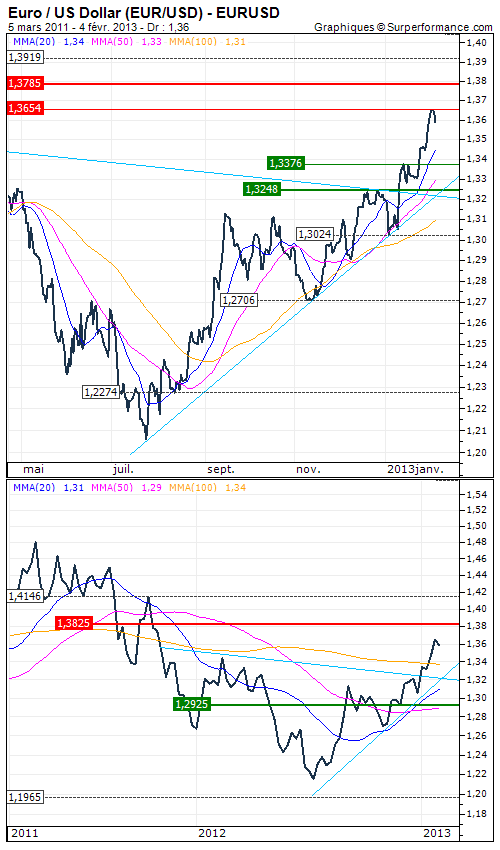Euro / US Dollar (EUR/USD) : Buying fever
By Alexandre Nutte
Though she had recently suggested a possible slowdown in its asset purchases, the U.S. Federal Reserve, unwilling to let dominated by the Bank of Japan on the monetary field, has retained its guideline during its last meeting. Besides, recent figures from the United States are not likely to reverse while the GDP of world's largest economy shrank in the fourth quarter (-0.1%) for the first time since June 2009, and the unemployment rate rose slightly, from 7.8 to 7.9%.
Victim of these ultra-accommodative policies, the Euro is also supported by a positive atmosphere in the markets.
By focusing intently on the situation of countries in difficulty, the situation is alarming. First we must remember that the IMF continues to assert that the Greek debt will not be sustainable without new direct transfers. Also, the Spanish GDP has revealed lower than expected at -0.7%, down for the fifth consecutive quarter, the lowest since 2009. Finally transalpine rates were strained again due to concerns about the situation of the financial institution Banca Monte dei Paschi di Siena, both in difficulty and in the heart of a new financial scandal.
Graphically, the Euro accelerates to USD 1.3654, crucial level that has not been able to hold in weekly close. A technical retracement now seems coherent by February 7 and the new press conference where Mario Draghi comments on the current high price of the euro will be particularly expected. Reluctant to position ourselves against the trend, however, we remain away from parity by this deadline.




